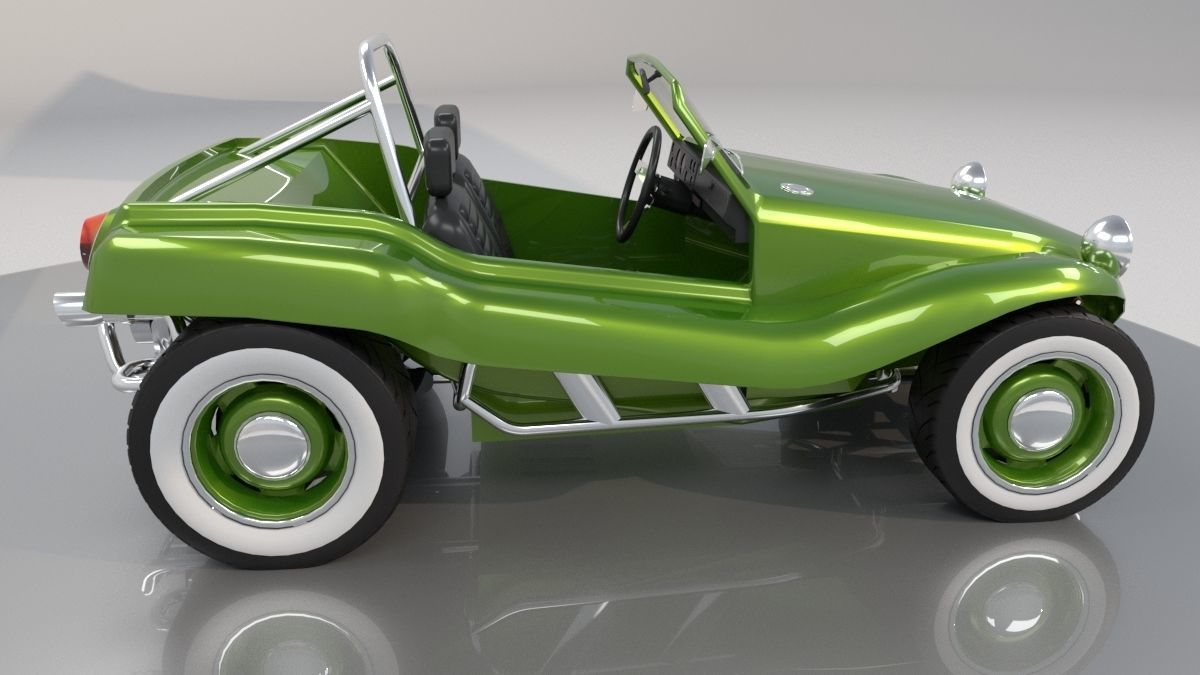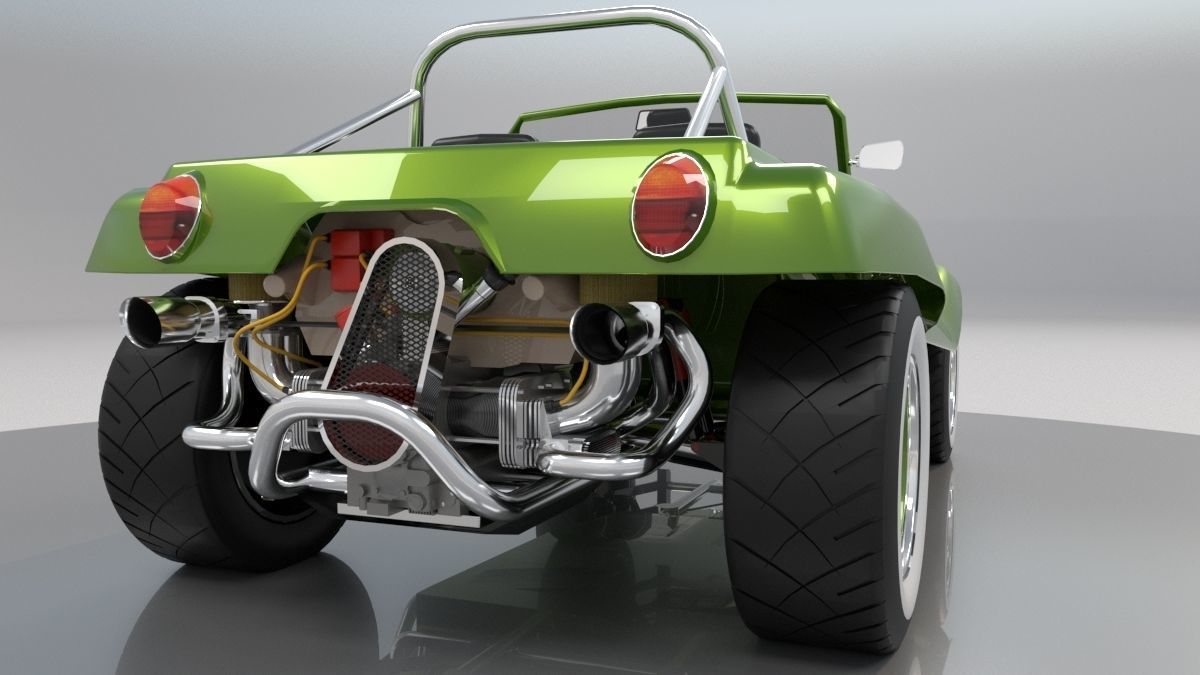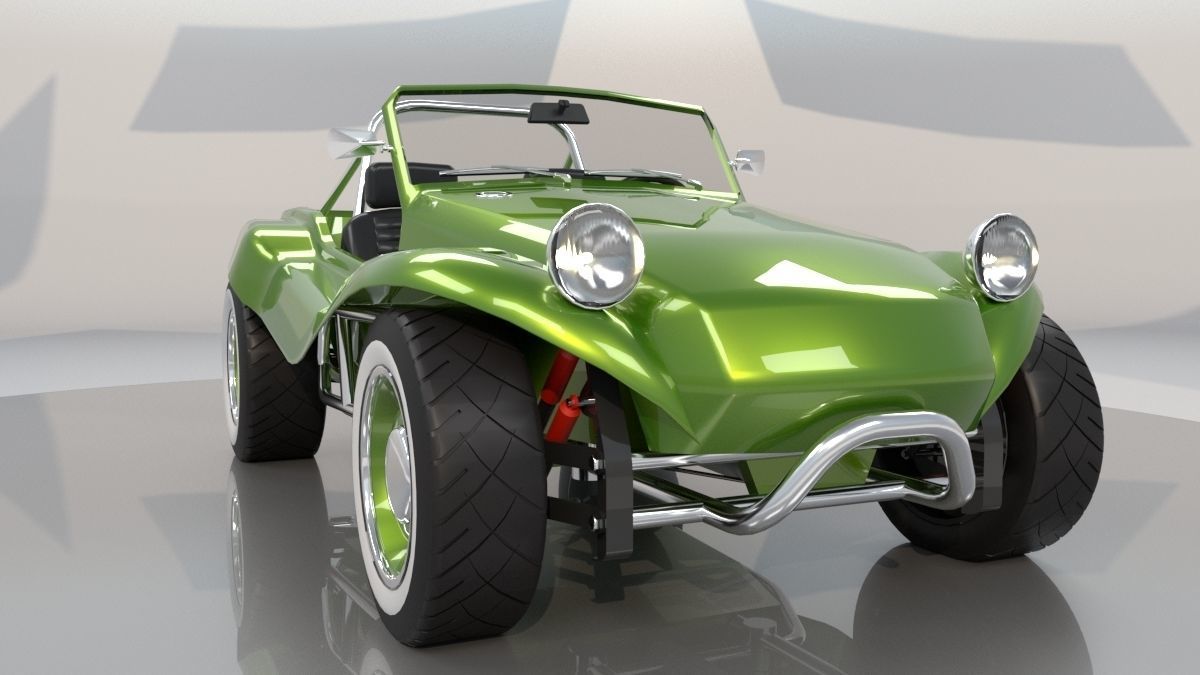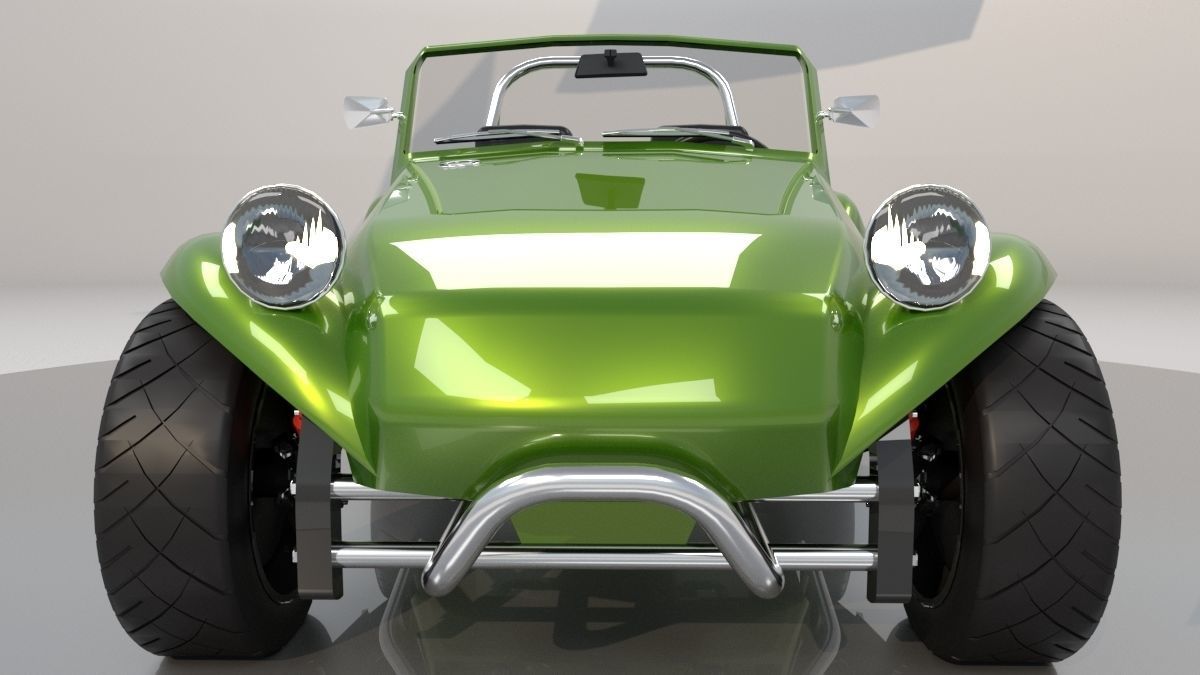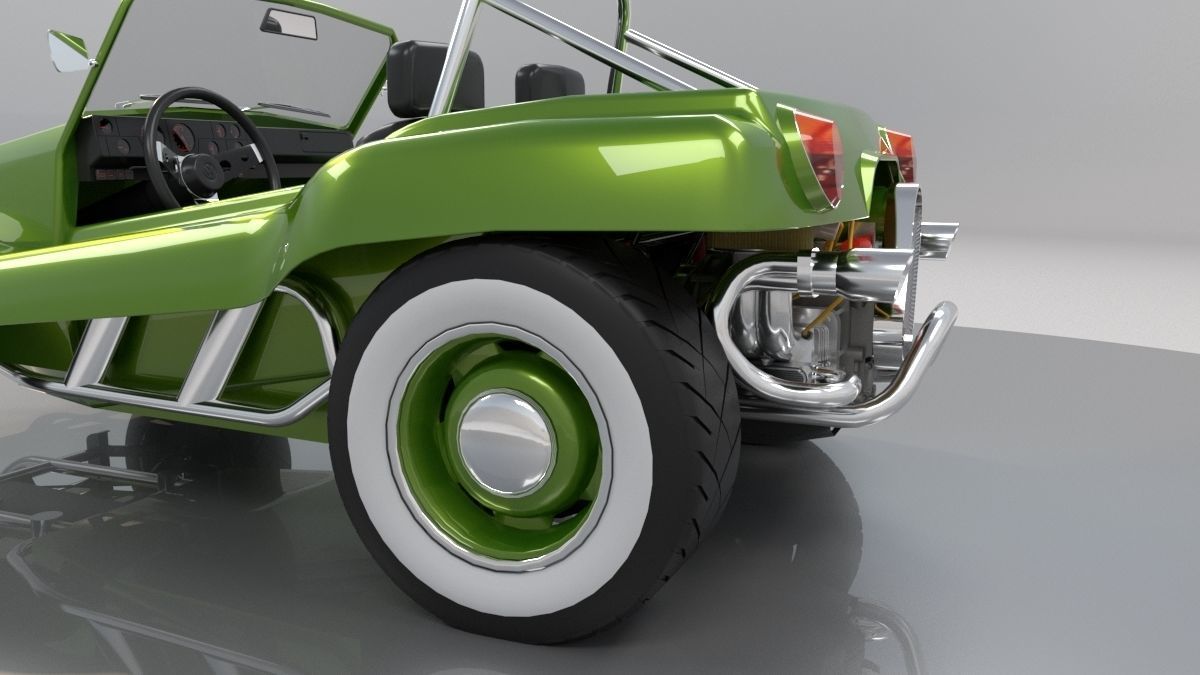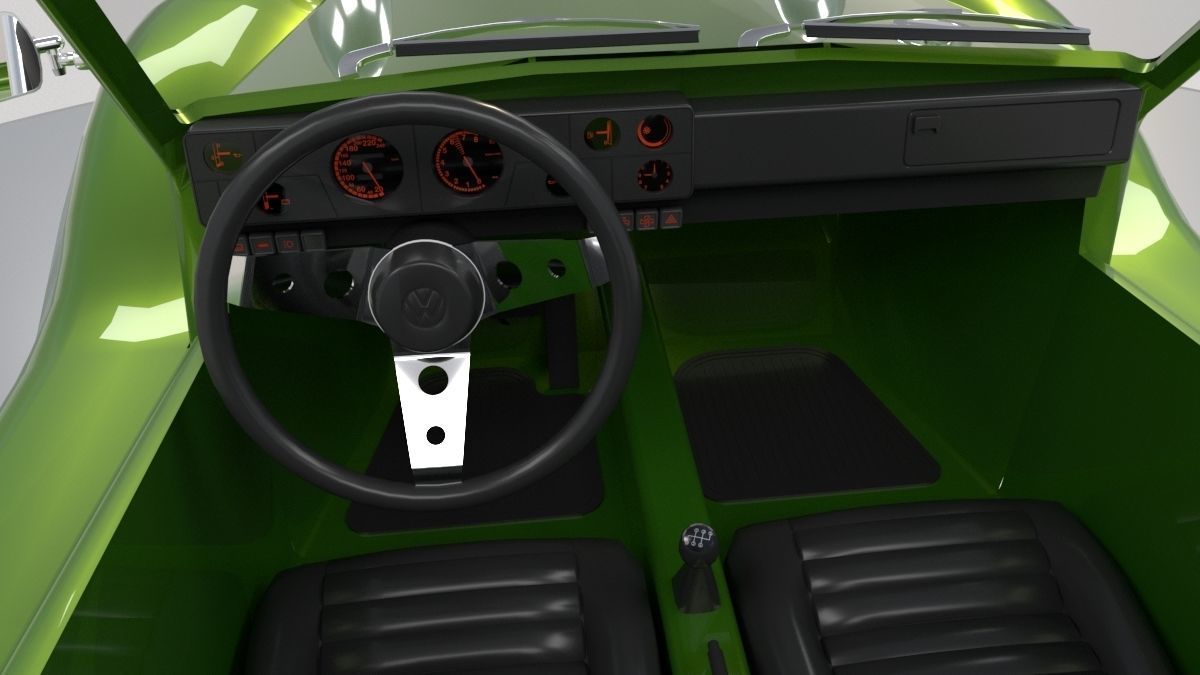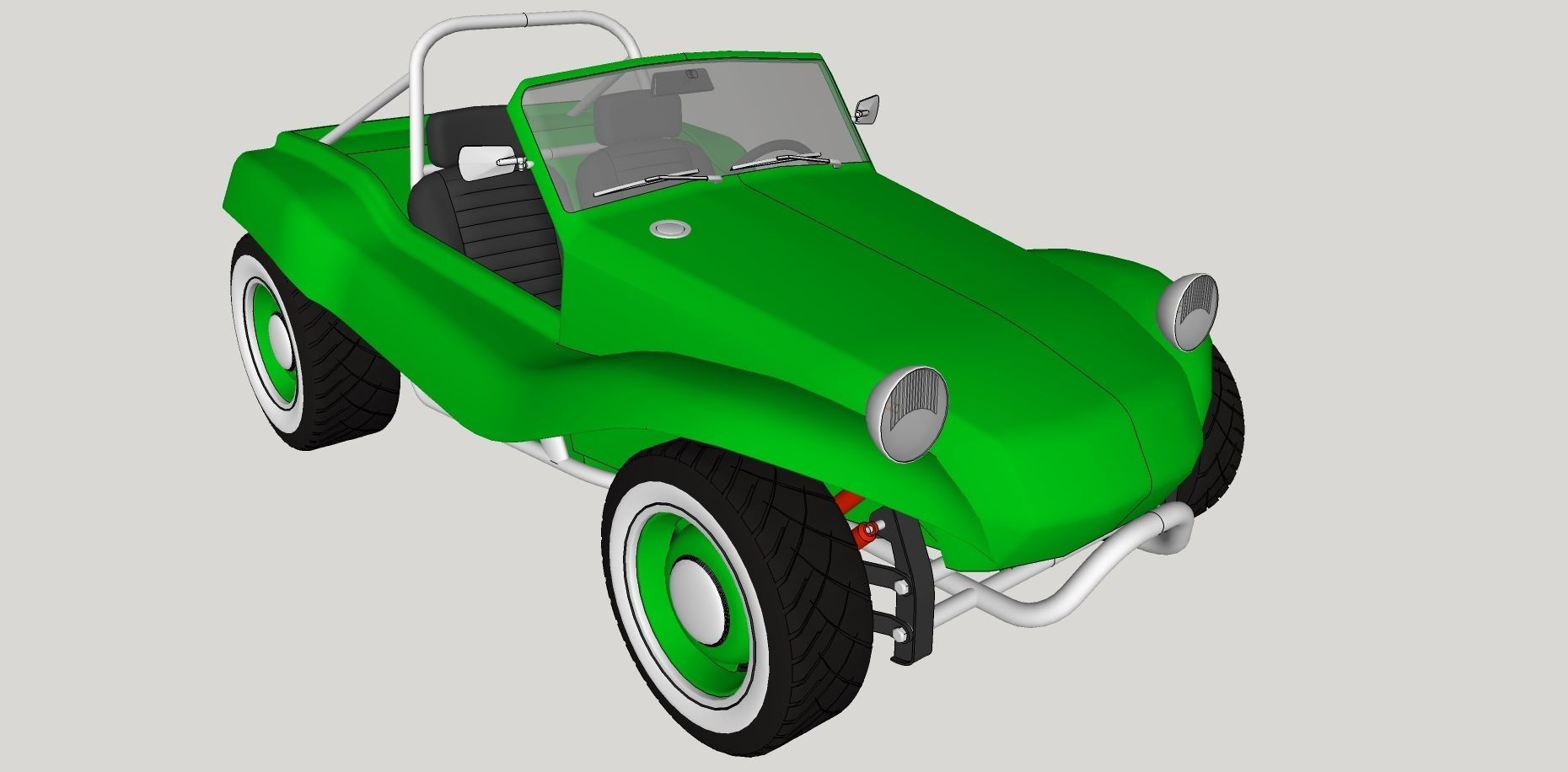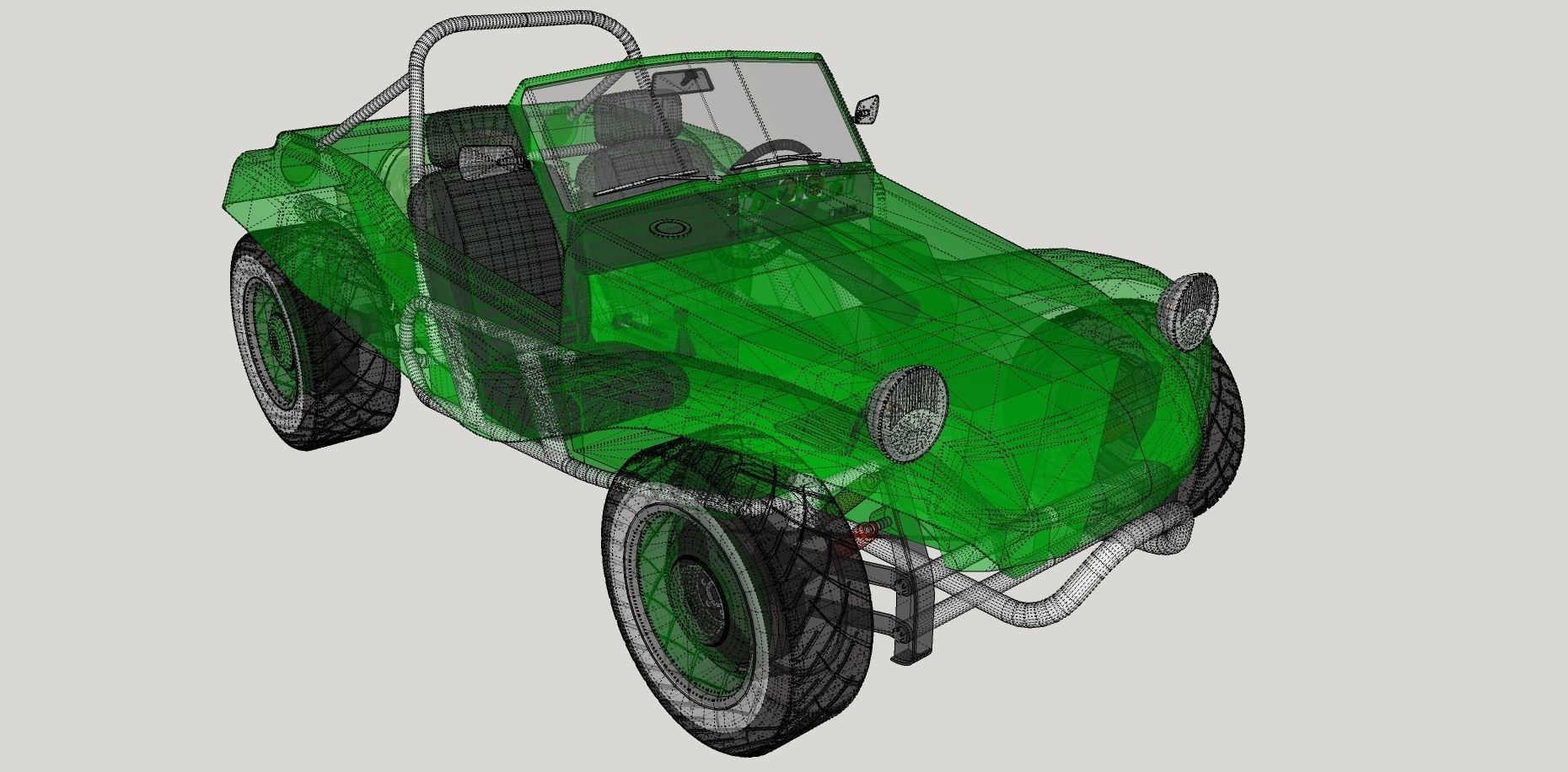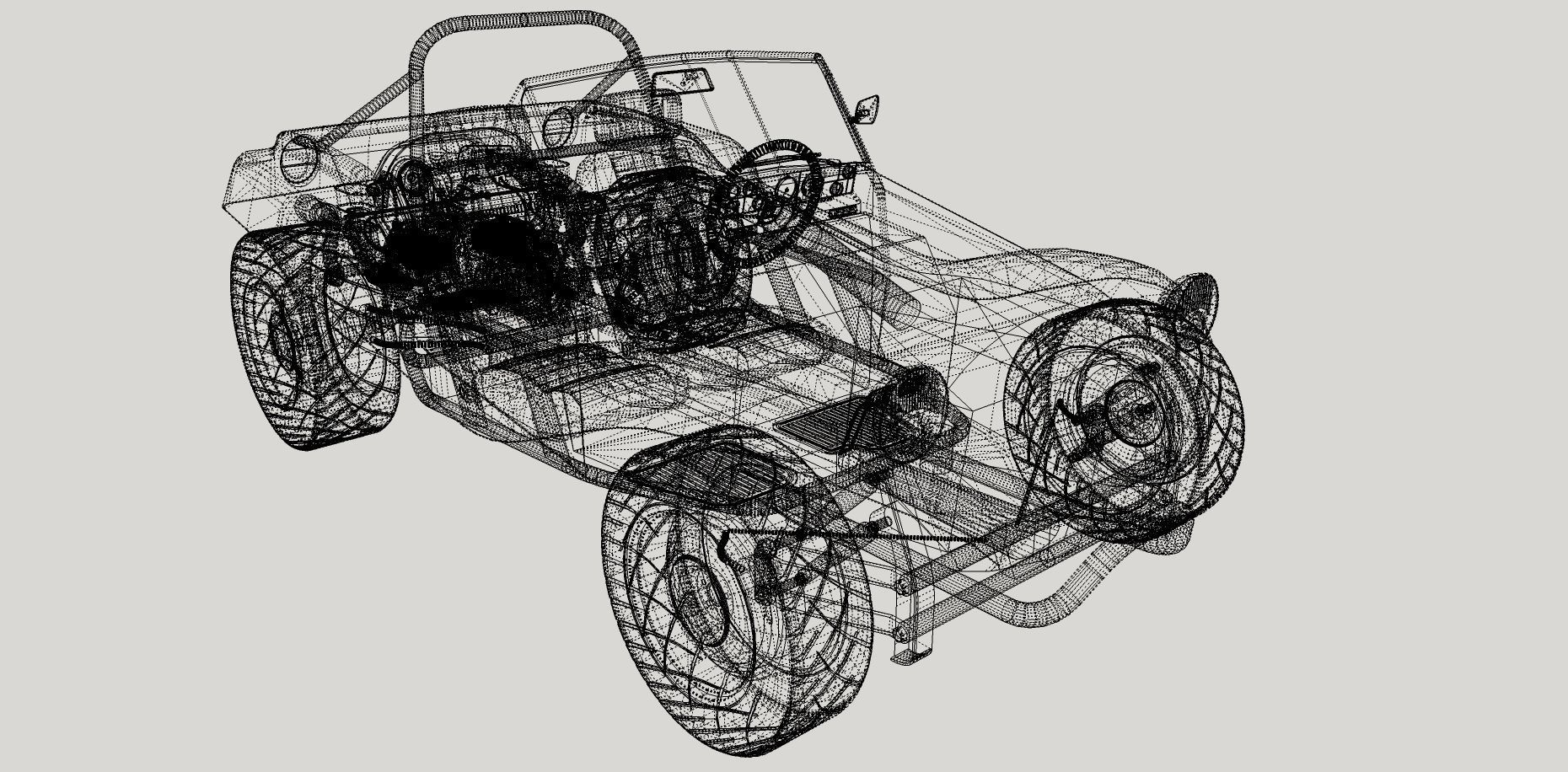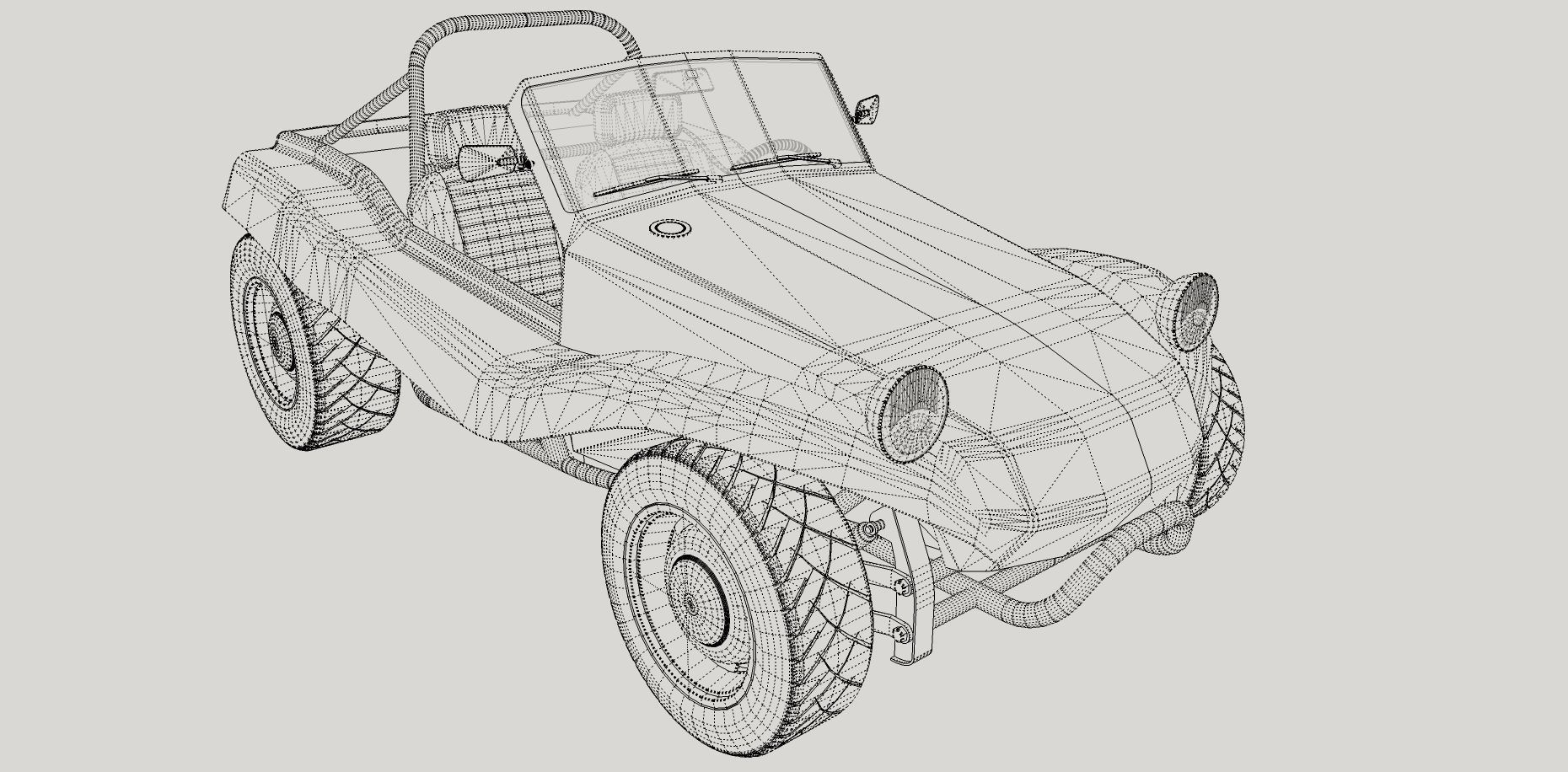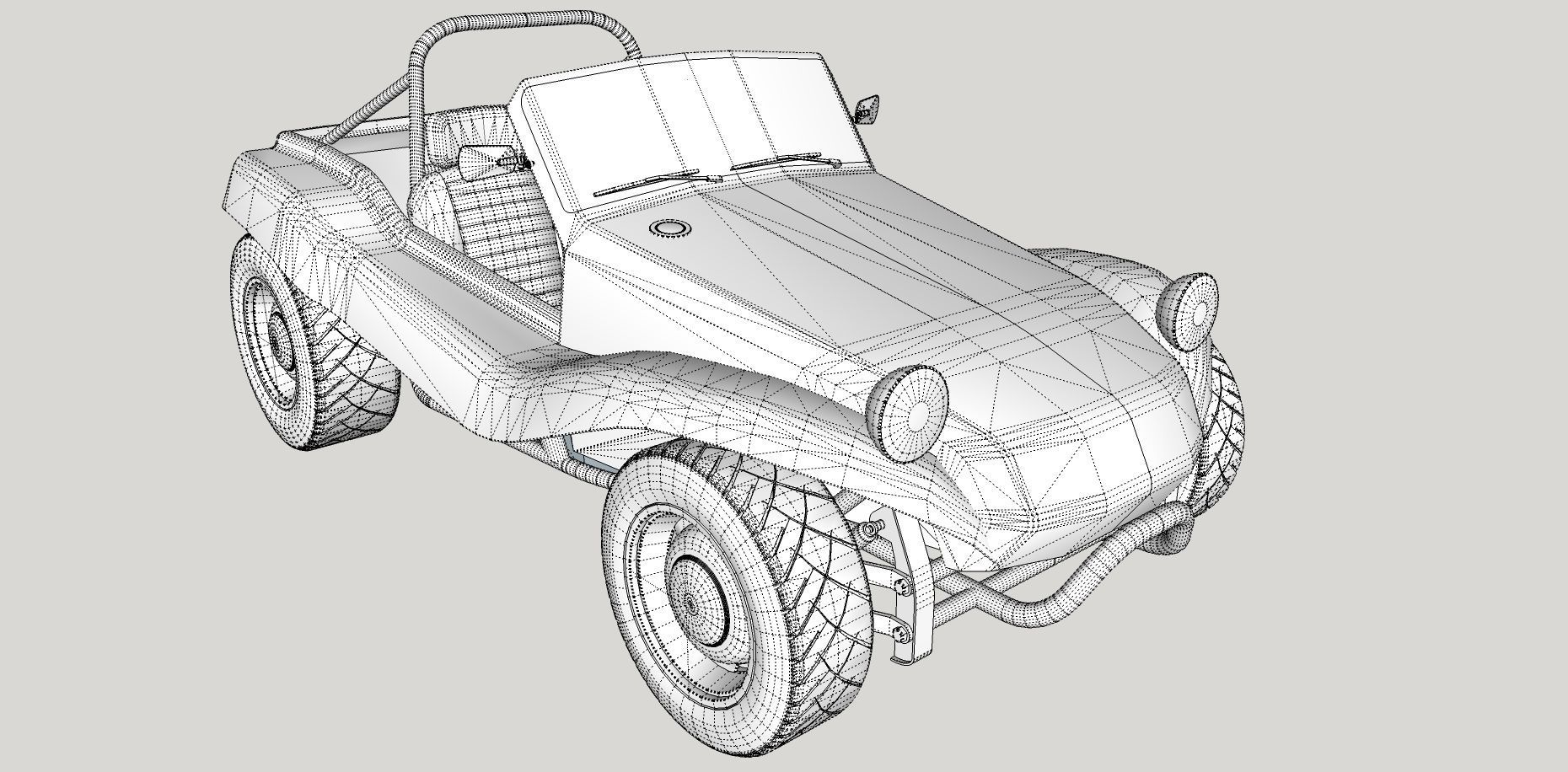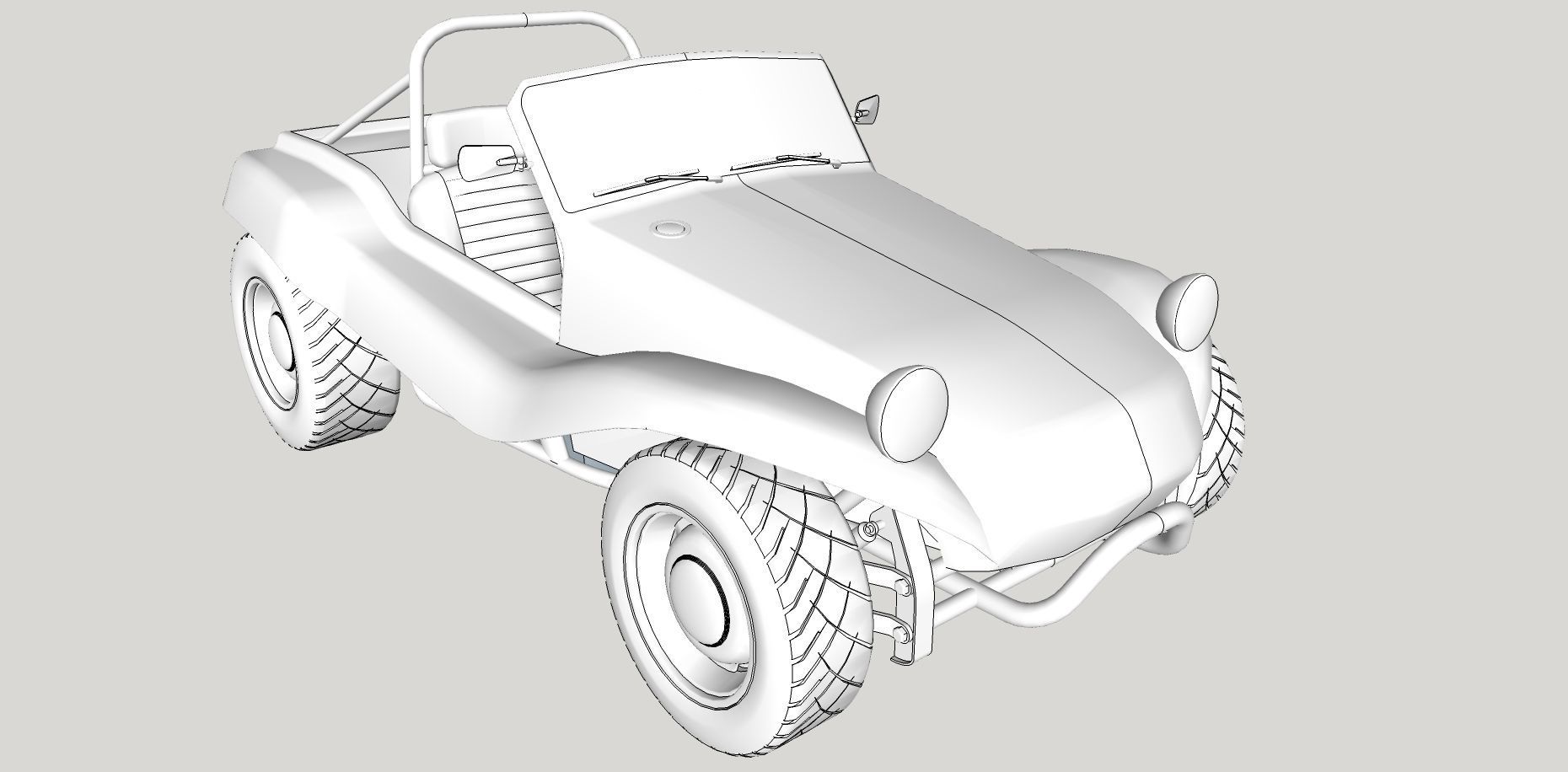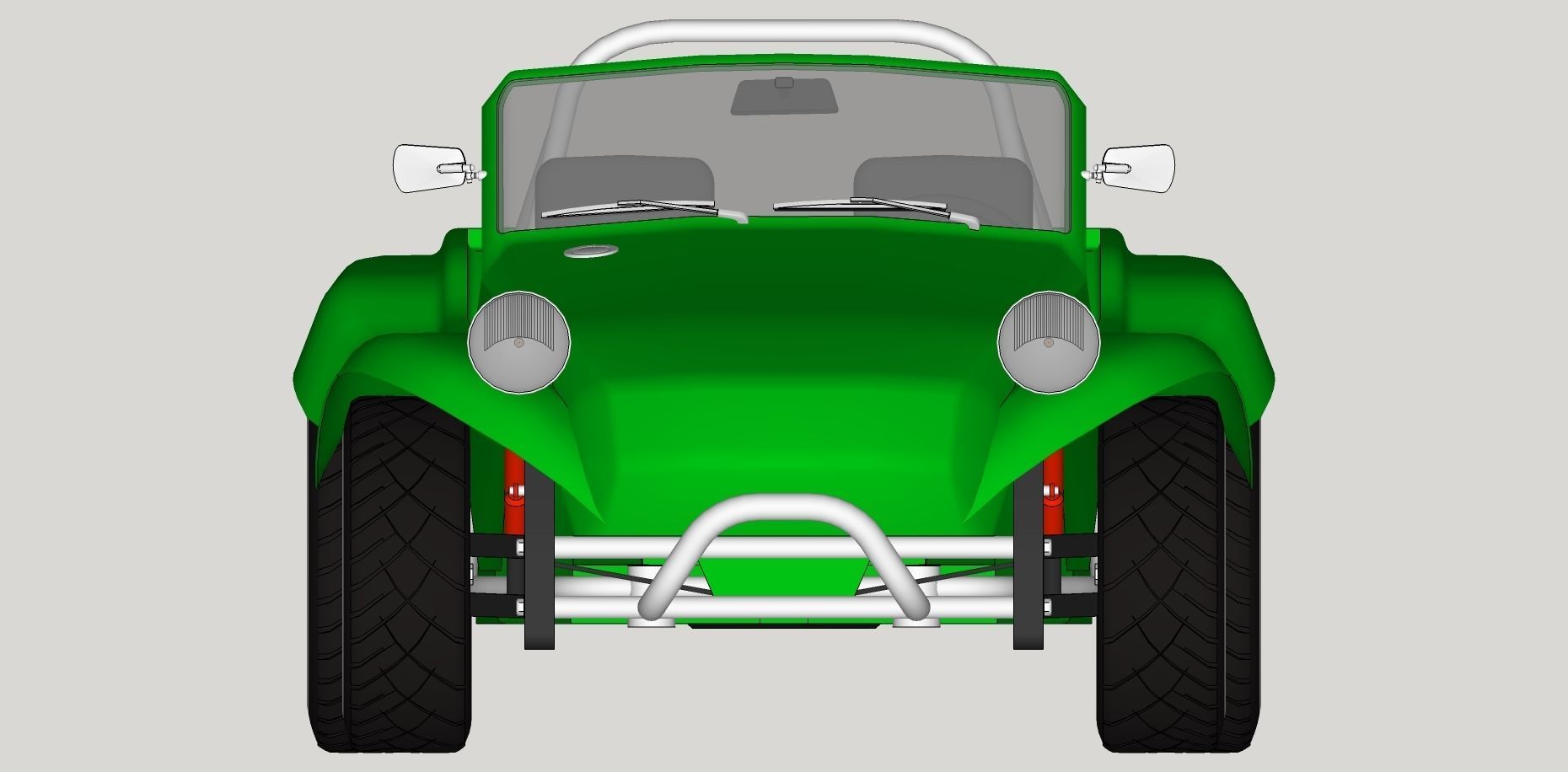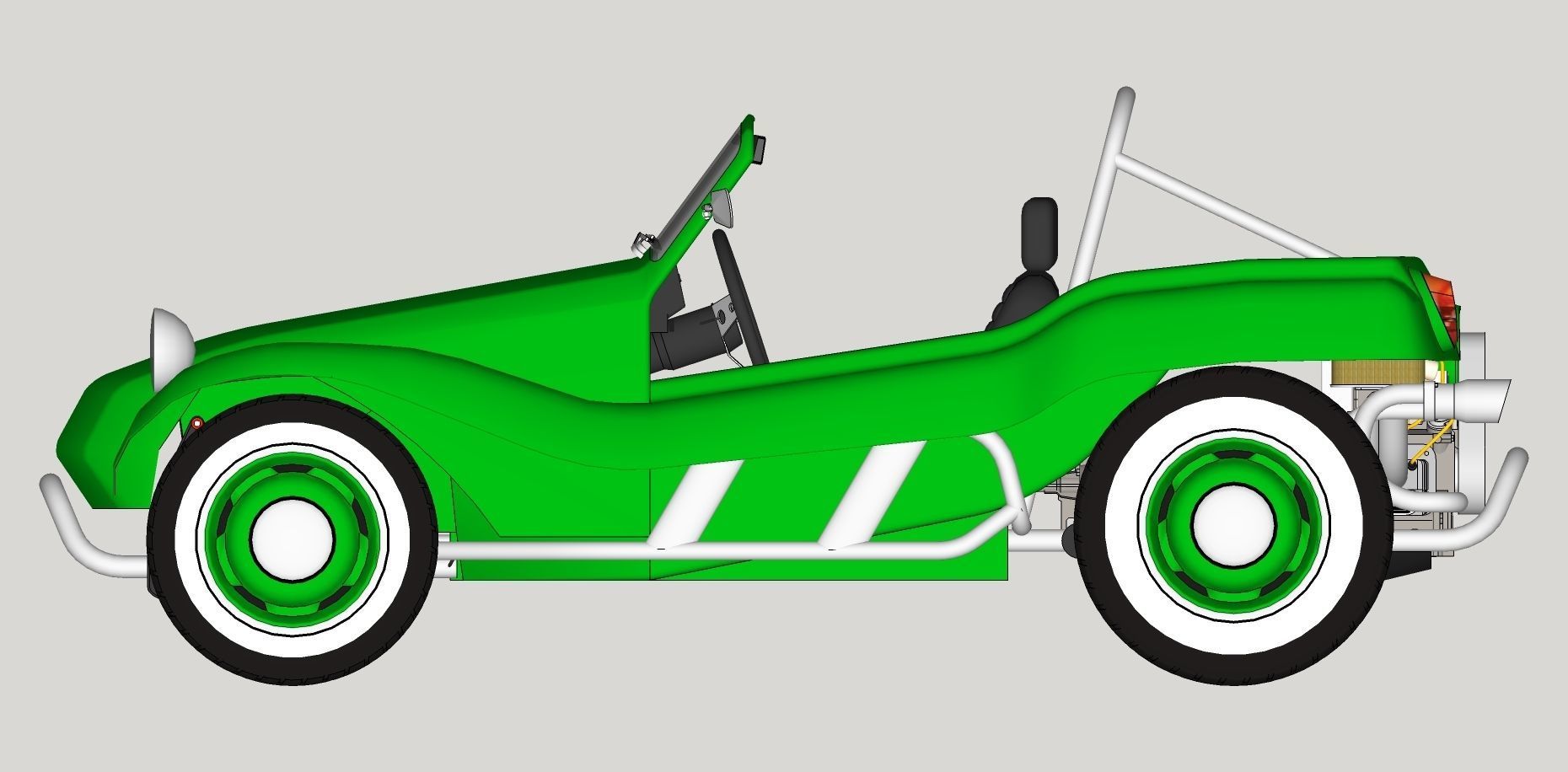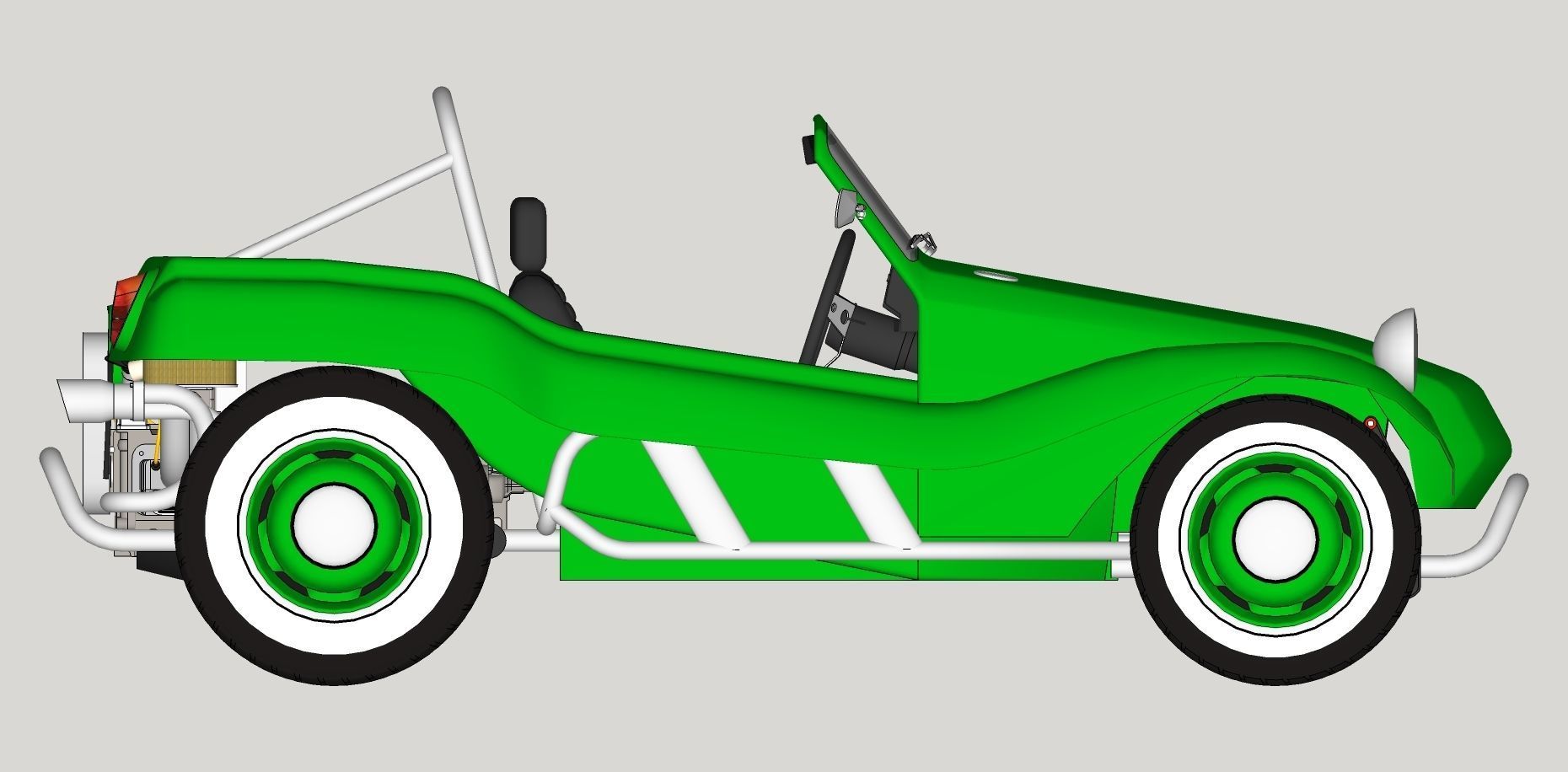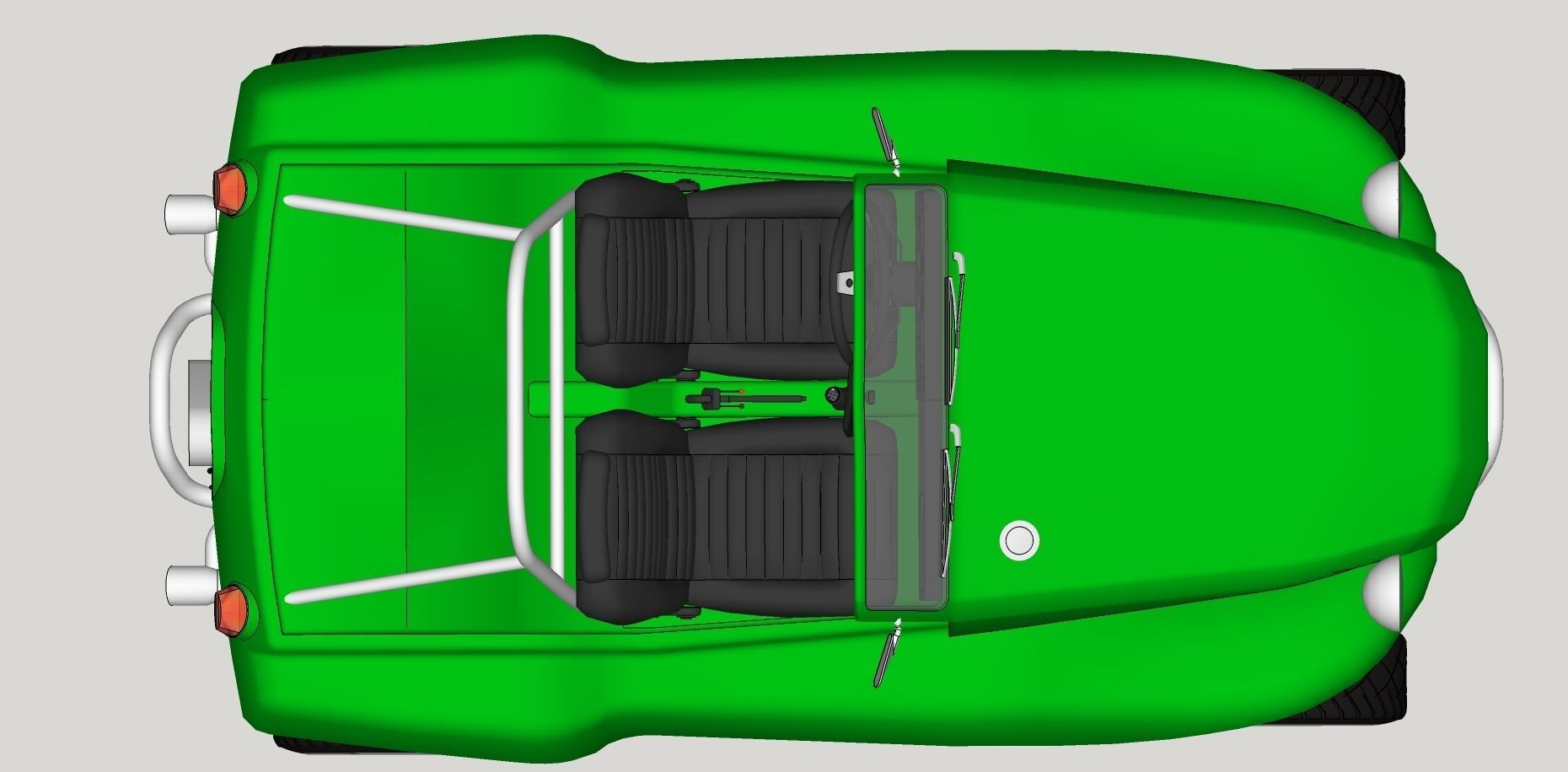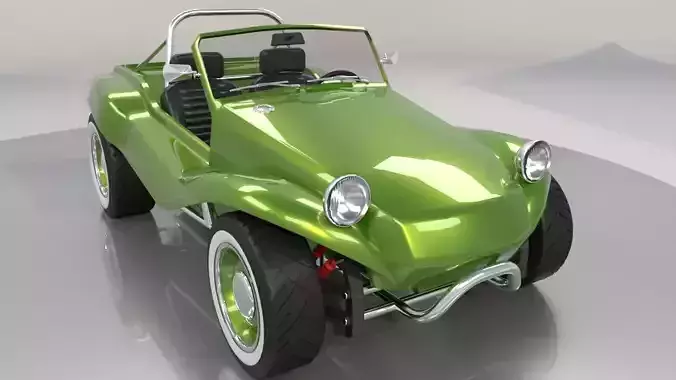
Volkswagen Buggy 3D model
I Invented almost everything... The basic shape was taken from pictures Some items from other vehicles from my collection.
Please note that the majority of the vertices and faces are from the engine and the tires
This model was designed in Sketchup and converted to 3ds and obj... using the buit-in sketchup converter. Rendering program is Maxwell free plug-in. Materials added to a single folder. Textures in model from Sketchup library Diferent parts of the model (steering wheel, lights, tires and wheels, wing mirrors, seats, etc.) are compiled in components and grouped in one single model.
This model is offered as it is
A dune buggy — also known as a beach buggy — is a recreational motor vehicle with large wheels, and wide tires, designed for use on sand dunes, beaches, roads or desert recreation.The design is usually a roofless vehicle with a rear-mounted engine. A dune buggy can be created by modifying an existing vehicle or custom-building a new vehicle.For dune buggies built on the chassis of an existing vehicle, the Volkswagen Beetle was commonly used as the basis for the buggy.[2] The model is nicknamed Bug, therefore the term buggy. The Beetle platform chassis was used because the rear engine layout improves traction,[3] the air-cooled engine[4][5] avoids the complexities and failure points associated with a water-cooled engine, the front suspension was considered cheap and robust[6] and the spare parts from Volkswagen were cheap and readily available.[7] Dune buggies with glass-reinforced plastic (fiberglass) bodies come in many shapes and sizes.
The original fiberglass dune buggy was the 1964 Meyers Manx built by Bruce Meyers.[2] Bruce Meyers designed his fiberglass bodies as a kit-car, using the Volkswagen Beetle chassis.[3] Many other companies worldwide have copied the original fiberglass dune buggy.[3] These types of dune buggies are known as clones. (https://en.wikipedia.org/wiki/Dune_buggy)


